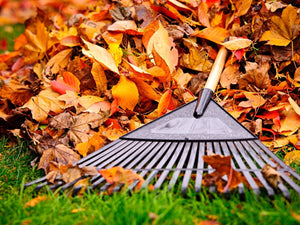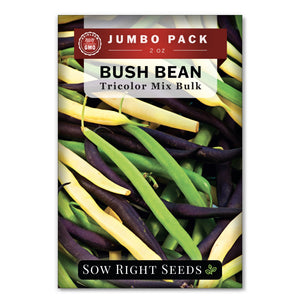Butter Beans or Lima Beans? Here’s How to Grow Them No Matter What You Call Them
BeansDid you know April 20th is National Lima Bean Respect Day? These underrated beans are incredibly productive, improve soil health, and offer delicious homegrown flavor. Whether you call them butter beans or lima beans, here’s how to grow them successfully!

Table of contents
You don’t have to be in the gardening world for long before you stumble into all kinds of controversy. Take lima and butter beans, for example. Serve up a dish of these creamy beans simmered all day, and one group of folks will call them butter beans, “Just like my grandma made.” While the other group claims these are nothing like the butter beans of their memory.
It’s not unusual for a plant with this much historical significance and widespread cultivation to have many names. Butter beans, sieva, double beans, Madagascar beans, chad beans, and wax beans are some of the names that all refer to Lima beans (Phaseolus lunatus).
These beans originated in South America, and because they were shipped from Lima, Peru, Lima Beans became the most common name. (Even though we don’t pronounce them the same.) There is a prevailing theory that these crescent-shaped beans hold some cultural significance because they appear in ancient Peruvian artwork.
Who wouldn’t be curious about a bean with such a history? For more information on the humble Lima bean, you can read this article: Lima Bean history
How to Grow Lima Beans from Seed
Call them what you want, but one thing’s for sure—the best-tasting lima beans (Phaseolus lunatus) are homegrown. If you love them at the tender, green baby stage, be sure to pick and cook them the same day for the sweetest flavor.
Lima beans are one of the easiest vegetables to grow from seed. Native to South America, they thrive in warm weather, so wait about two weeks after the last frost when nighttime temperatures stay consistently warm. For a steady harvest, try succession planting every two weeks.
Sow lima bean seeds directly in the garden 1-2 weeks after the last frost, once the soil has warmed to at least 65°F. Choose a sunny spot with well-draining soil, and space seeds 5-6 inches apart to give them room to grow.

Seed Germination Tips
Direct sow lima beans when the soil has warmed up to 65ºF.
Plant 1 seed per hole, 1” deep and 5 to 6” apart.
Keep soil moist until beans sprout in 7 to 18 days.
Butter Beans vs. Lima Beans: What’s the Difference?
Lima beans and butter beans are the same species (Phaseolus lunatus), but the name depends on regional differences and variety.
Butter beans are typically smaller, creamier varieties like Henderson Lima Beans.
Lima beans often refer to larger beans, like Fordhook Lima Beans.
Some heirloom varieties, like Jackson Wonder, are beautifully speckled seeds.
All butter beans are lima beans, but not all lima beans are butter beans!

Popular Heirloom Lima Bean Varieties
Fordhook Lima Beans
Jackson Wonder Lima Beans
Henderson Lima Beans
This popular heirloom bush-style lima bean is compact and only reaches 16-18 tall". Each pod has 3-4 creamy tender lima beans that are reliably delicious, fresh, dried, or frozen. The Henderson variety has a smaller bean and is usually what people are referring to when they say butterbean.
Growing Lima Beans
In our Sow Right Seeds garden, we find lima beans to be one of the easiest seeds to sow and grow to maturity. We wait to sow seeds until the soil has warmed up. Lima beans are an excellent summer garden crop. There are vining varieties as well as bush varieties. For vining varieties, you can put in stakes or have them grow up a trellis. No additional supports are needed for bush varieties.
Each plant will produce many pods, and each pod will be full of several beans. Lima bean plants don’t need a lot of maintenance to grow bushels of beans. The beans can be harvested and eaten at different stages. Some prefer the young or baby lima beans, and others prefer to let them grow until they dry in the pod.

Sun
Plant lima beans in full sun. Your lima bean plants may grow okay in partial shade but not produce as many bean pods. A minimum of 6 hours of daily sunlight is needed, but 8 or more is better.
Soil
Water
Fertilizer

Harvesting Lima Beans
You'll be harvesting lima beans about 65 to 90 days from when the plants start growing. The amount of time to maturity depends on the specific variety and the growing conditions. The pods don’t all mature at the same time.
You can harvest beans in the shelling stage. This is when the pods may still be green, but the beans are plump and starting to touch each other inside.
Lima beans can also be harvested later when the pods and beans have dried. At this stage, all the green is gone, and the beans rattle in the pods. If you wait too late, they will burst open, and the seeds will spill out on the ground.
The pods are not edible. Shell them and eat the beans, either still young or dried. Discard the pods into your compost bin.
Lima beans, like other legumes, can fix nitrogen in the soil. So after the crop is done, you can till the plants back into the soil as long as there is no disease.
Notes on cooking lima beans:
You MUST cook lima beans - boil for at least 10 minutes. Most cooks prefer cooking fresh beans for 30 minutes and stirring often for a creamy texture.
Dried Lima beans can be soaked overnight and then cooked. There are lots of great recipes for Lima beans. These beans have a thin skin and can easily absorb the flavors of whatever they are cooked in.

Lima Bean Pests & Diseases
Lima bean pests and diseases can vary depending on the local environment. Watch for the same diseases and pests that are common to bean plants.
Pests to watch out for: Spider mites, bean beetles, cucumber beetles.
Diseases that can afflict Lima beans: Powdery mildew and root rot from overwatering.

Lima Bean FAQs
Are lima beans the same as butter beans?
Do I need to soak lima beans before planting?
Do you need to cook lima beans before eating?
Lima, butter, sieve, or whatever you call them, if you enjoy the earthy creamy flavor of lima beans, you’ll love homegrown even more. Try growing heirloom Lima beans in your garden and enjoy a fresh harvest.
Sow Lima bean seeds in warm soil.
Dry Lima beans rattle in the pod when it is time to harvest.
Cook lima beans before eating.







When choosing companion plants for Lima Beans, consider timing. You can plant cool weather crops like lettuce and radishes. These can be harvested as the weather gets warmer and the bean plants grow larger. When the beans are finished, you can plant fall crops like broccoli in their place.
As I’m challenged on space in my raised beds, I was wondering what you think are the best companion plants for Henderson Limas.
Leave a comment